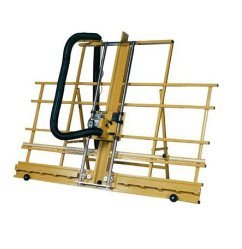Safety Tips Every Woodworker Should Know When Using a Panel Saw
Panel Saw

Woodworking can be a fulfilling and creative hobby or profession, but it also comes with inherent risks, especially when using powerful tools like a panel saw. A panel saw is a versatile machine designed to cut large sheets of material accurately and efficiently. However, its power and capabilities can lead to dangerous situations if proper safety precautions are not followed. Whether you are an experienced woodworker or just starting out, understanding the safety measures associated with using a panel saw is crucial for preventing accidents and ensuring a productive working environment. In this article, we will discuss essential safety tips that every woodworker should know when using this machine, helping you to work confidently and securely.
Understanding the Importance of Safety in Woodworking
Safety should always be a priority in any woodworking endeavor. The nature of woodworking involves sharp blades, heavy materials, and machinery that can cause serious injury if misused. While designed to streamline cutting processes, can pose risks if the operator is not adequately trained or attentive. By following established safety protocols, woodworkers can significantly reduce the likelihood of accidents and create a safer workspace. Here are some crucial safety tips to keep in mind when using a panel saw:
Key Safety Tips for Using
Read the Manual:
Before operating a panel saw, familiarize yourself with the user manual. Understanding the specific features, settings, and limitations of your particular model is essential for safe operation.
Each panel saw may have unique safety mechanisms or operational guidelines, and knowing these can help you avoid mistakes.
Wear Appropriate Personal Protective Equipment (PPE):
Always wear safety glasses or goggles to protect your eyes from flying debris and dust. A dust mask can also be beneficial to prevent inhalation of harmful particles.
Consider wearing ear protection, especially when working for extended periods, as panel saws can produce high noise levels.
Maintain a Clean Work Area:
Keep your workspace tidy and free from clutter. Sawdust and debris can create hazards, increasing the risk of slips and falls.
Ensure that all tools and materials are organized, allowing you to focus on your work without unnecessary distractions.
Check the Saw Before Use:
Inspect the panel saw before each use to ensure that it is in good working condition. Check for loose or damaged parts, including the blade, and make any necessary adjustments or repairs.
Confirm that all safety features, such as blade guards and emergency stop buttons, are functional before operating the saw.
Secure Your Material:
Properly support and secure the material you are cutting to prevent it from moving or shifting during the operation. Use clamps or supports to hold large panels in place, ensuring stability.
When working with larger sheets, consider having an assistant help manage the material, as uneven weight distribution can lead to accidents.
Use the Right Blade:
Select the appropriate blade for the material you are cutting. Using the wrong blade can lead to inefficient cuts, excessive wear, and increased risk of kickback.
Ensure that the blade is sharp and properly aligned. A dull blade can cause the saw to bind or kick back, posing a serious safety risk.
Follow Proper Cutting Techniques:
Stand to the side of the panel saw when cutting, rather than directly behind it. This positioning can protect you from potential kickback or debris.
Use both hands to control the material and follow the manufacturer's guidelines for feed rates. Do not force the material through the blade; allow the saw to do the work.
Avoid Distractions:
Stay focused on your work while using the panel saw. Avoid engaging in conversations or allowing distractions that could lead to lapses in concentration.
Turn off any music or noise sources that could impede your ability to hear operational sounds or alarms.
Know Emergency Procedures:
Familiarize yourself with the emergency stop functions and procedures associated with your panel saw. In case of an accident, knowing how to quickly shut down the machine can prevent further injury.
Keep a first aid kit readily accessible in your workspace, and know how to use it in case of minor injuries.
Get Proper Training:
If you are new to using a panel saw, seek guidance or training from experienced woodworkers or professionals. Hands-on training can help you understand the nuances of operating the saw safely.
Consider enrolling in woodworking classes that emphasize safety practices and equipment handling.
Enhancing Woodworking Capabilities
Using a panel saw can significantly enhance your woodworking capabilities, but it is essential to prioritize safety at all times. By adhering to these safety tips, you can create a secure working environment that minimizes risks and promotes efficient cutting. Remember that proper preparation, the right equipment, and an attentive mindset are key to preventing accidents in the workshop. Whether you are working on a small project or tackling larger materials, maintaining safety will not only protect you but also ensure that your woodworking experience is enjoyable and productive. By investing time in understanding safe practices, you can confidently utilize your panel saw and produce high-quality results in your woodworking endeavors.
What's Your Reaction?
















